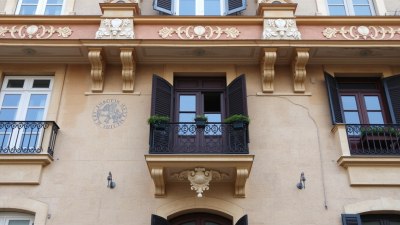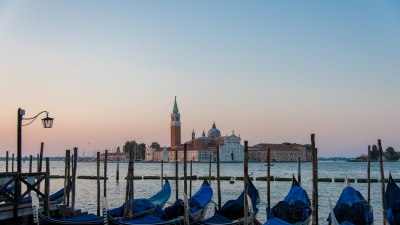History Hung from the Balconies of Ragusa, Italy
Explore the rich history of Ragusa, Italy, through its iconic balconies and architecture.

Image created with Flux Schnell
Ragusa, a stunning city in southern Italy, is known for its intricate baroque architecture and picturesque landscapes. Its historic center, a UNESCO World Heritage site, boasts beautiful churches, palaces, and, most notably, their exquisite balconies. These balconies tell the tales of the city’s past, from local traditions to significant historical events.
The history of Ragusa dates back to ancient times, with its earliest roots in the Sicilian towns that thrived on trade and agriculture. The unique geographic location of Ragusa, perched on a hill, not only provided a strategic advantage but also contributed to the development of its architectural style, which merges both medieval and baroque influences.
One of the most fascinating aspects of Ragusa’s architecture is its balconies. These elegant structures serve not only as extensions of homes but also as small stages for social interaction. Historically, the balconies allowed women to observe the bustling streets of Ragusa while maintaining a level of privacy in their domestic lives. Over the centuries, they evolved into a distinctive feature of the city’s façades, adorned with ironwork and intricate stone carvings that reflect the local artistic style.
The Baroque Era
The transformation of Ragusa into a baroque masterpiece occurred primarily after the devastating earthquake of 1693, which leveled much of southeastern Sicily, including Ragusa. The reconstruction of the city led to a flurry of building activity, strongly influenced by the baroque architectural style. During this period, many of the city’s most iconic structures were built, including the Cathedral of San Giovanni Battista and the Church of Santa Maria delle Scale.
Baroque architecture is characterized by grandeur, drama, and a sense of movement. In Ragusa, this is expressed through the lavish intricacies of cast iron balconies that adorn many buildings. These are not mere functional structures; they are artistic expressions that capture the essence of the era’s aesthetic ideals. Many of these balconies feature ornate scrollwork, floral patterns, and sometimes even mythical creatures.
Balconies as Social Spaces
Beyond their architectural beauty, the balconies of Ragusa played a significant role in the social fabric of the city. Traditionally, balconies were used as social meeting points, where people gathered to exchange news and engage in conversations. They served as ideal places for both recreation and communication, where the essence of community life thrived.
In the warmer days, you might find families enjoying time together on their balconies, sipping espresso and exchanging stories. Local festivals, such as the Feast of San Giorgio, often see colorful decorations adorning balconies, turning the entire neighborhood into a vibrant spectacle filled with music, dancing, and food.
The Influence of Local Traditions
Ragusa's cultural identity is interwoven with its unique traditions and customs, which are prominently reflected in its architectural elements. The Balconies, crafted with meticulous care, often feature local motifs derived from the natural surroundings—like vines, flowers, and even references to the sea that lies just a stone’s throw away. This deep connection with nature not only enhances the visual aesthetic but also reinforces the cultural significance of the local environment in shaping the lifestyles of the inhabitants.
During local festivities, balconies serve as the perfect vantage points for viewing parades and other community events, as well as a platform for expressing local pride. This is especially evident during the “Infiorata,” where colorful flower carpets adorn the streets below, turning the city into a living canvas. Balconies become essential viewing spots, showcasing the unity and spirit of the community.
Architectural Significance
The architectural significance of Ragusa is further highlighted by the various styles of balconies that have emerged over the decades. While the baroque balconies stand out for their opulence and detail, later influences, including neoclassical and empiric styles, introduced new designs that continued to adapt to changing tastes. This evolution reflects not just the artistic preferences but also the socio-political changes that have shaped the city.
Each balcony tells a story; for instance, the simpler, more rustic styles represent the homes of the working class, while the majestic balconies show the affluence of nobility and merchants. Notably, the balconies of Palazzo Cosentini are celebrated for their unique symmetry and ornate carvings, showcasing the pinnacle of baroque craftsmanship.
The Modern Era and Preservation Efforts
As time has progressed, Ragusa continues to be a vibrant living museum of history, and protecting its architectural treasures is a priority for many local organizations and the government. Restoration efforts are undertaken periodically to preserve the unique designs of these balconies, ensuring they remain intact for future generations. This involves not only repairing structural elements but also adhering to traditional craftsmanship techniques.
Tourism has played a pivotal role in the preservation of these historical features. Visitors from around the world are drawn to the beauty of Ragusa, often capturing the striking aesthetics of its balconies through photographs and artistry. This interest helps promote awareness around the importance of maintaining the city’s rich architectural heritage.
The balconies of Ragusa, Italy, are more than just architectural features; they are storytellers of the city’s history, culture, and community spirit. From their baroque beginnings to their modern significance as social hubs, these balconies reflect the enduring relationship between the people of Ragusa and their environment. As custodians of the city’s legacy, residents continue to cherish and celebrate their balconies, keeping the stories that hang from them alive for generations to come. Visiting Ragusa offers not just a journey through breathtaking landscapes and stunning architecture, but an opportunity to step into the pages of history that continue to fan out from this remarkable city.











